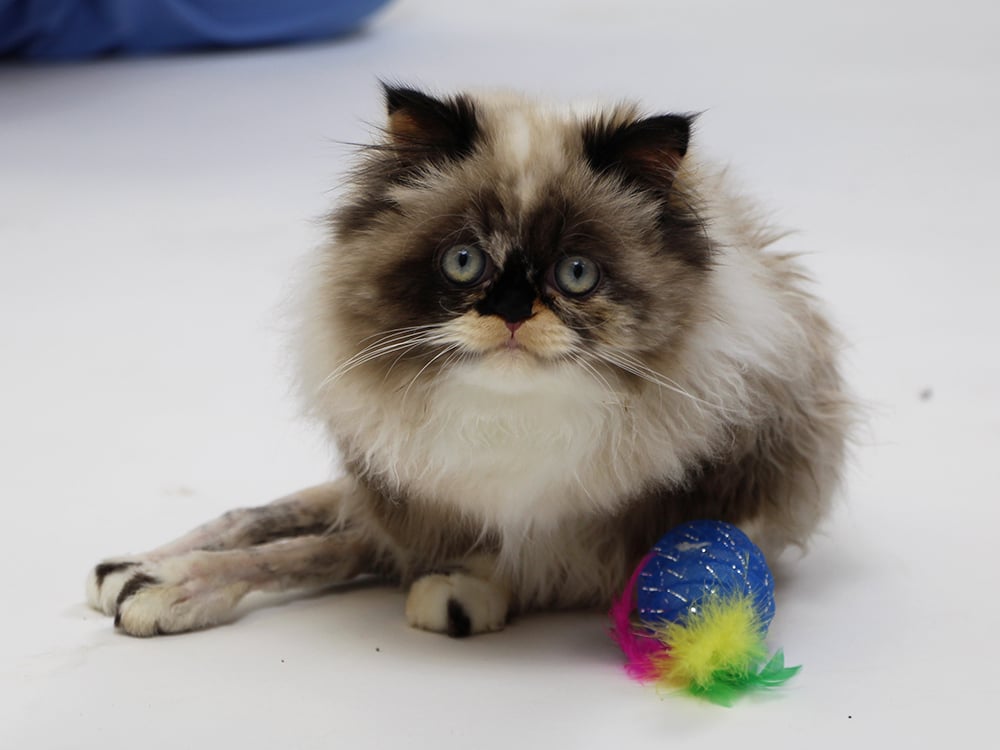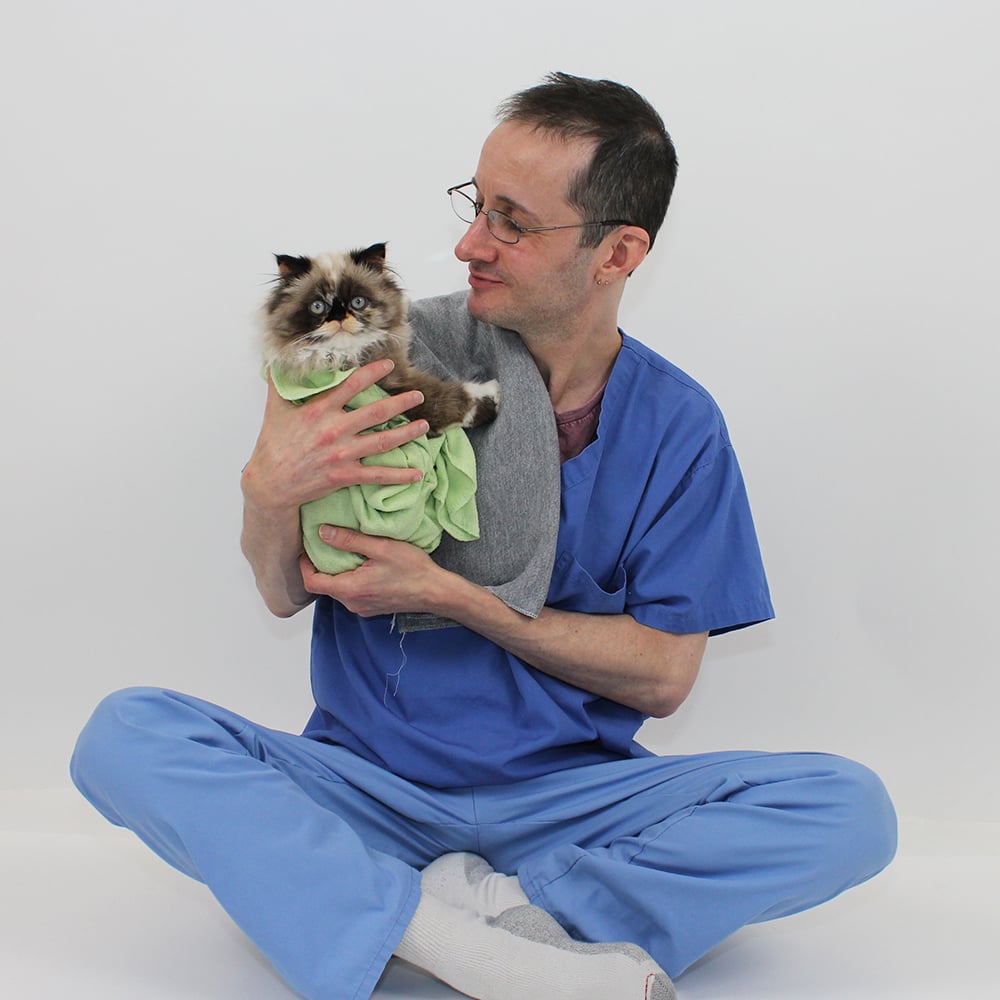Trixie is everything a kitten is supposed to be: adorable, lively, bright-eyed, and bushy-tailed. At least at first glance. Take a second look at this sweet, seven-week-old Persian mix and you’ll notice that her hind legs are limp and lifeless. And you’ll wonder, what happened to this little girl?
Bottom line? We don’t know. Although no fractures were seen on her x-rays, a spinal abnormality is the most likely explanation for Trixie’s paralysis. We don’t know whether this is congenital or the result of an injury—though her doctors suspect that injury is the more likely cause.
At this point, Trixie’s right hind leg appears to be useless. But as you watch this spunky little girl pull herself forward, you can see a slight movement in her left hind leg. She’s clearly trying to use it, and it responds, if only a little.
This subtle movement, combined with Trixie’s incredible determination and our talented medical team, gives us hope for her future.
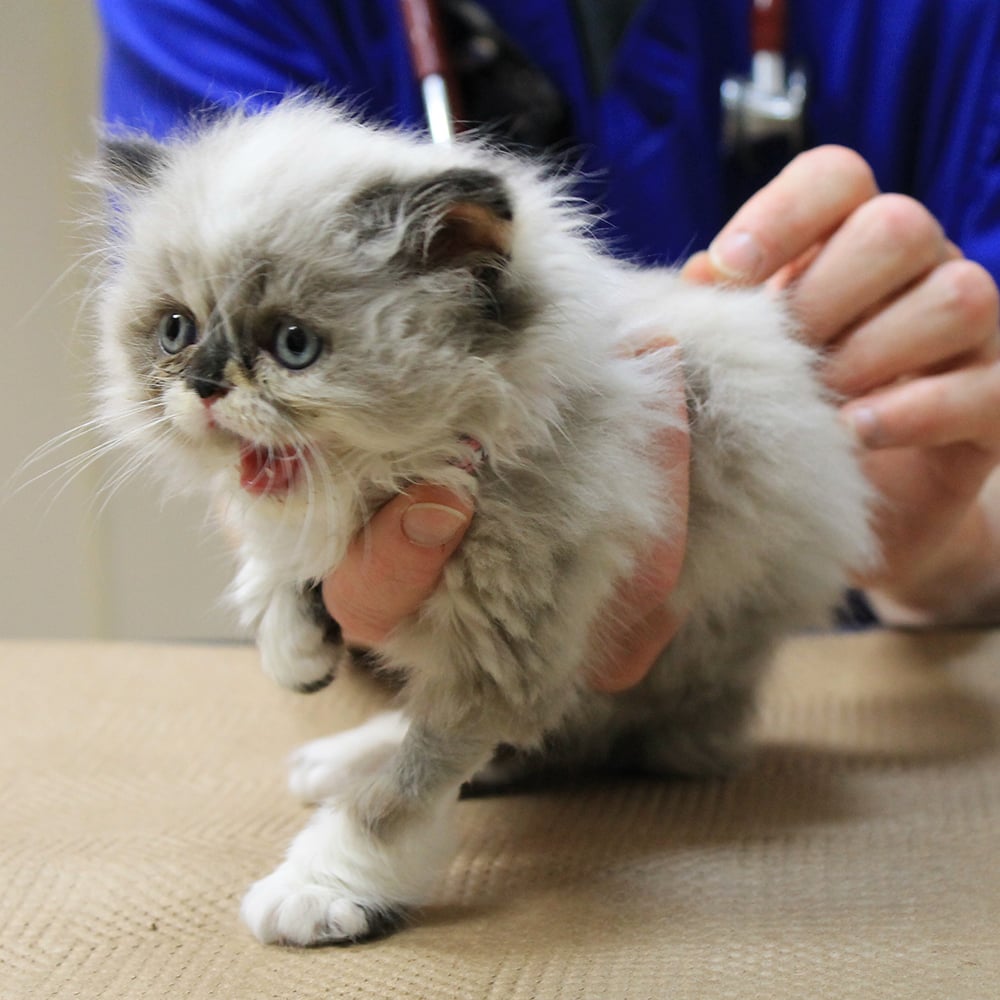
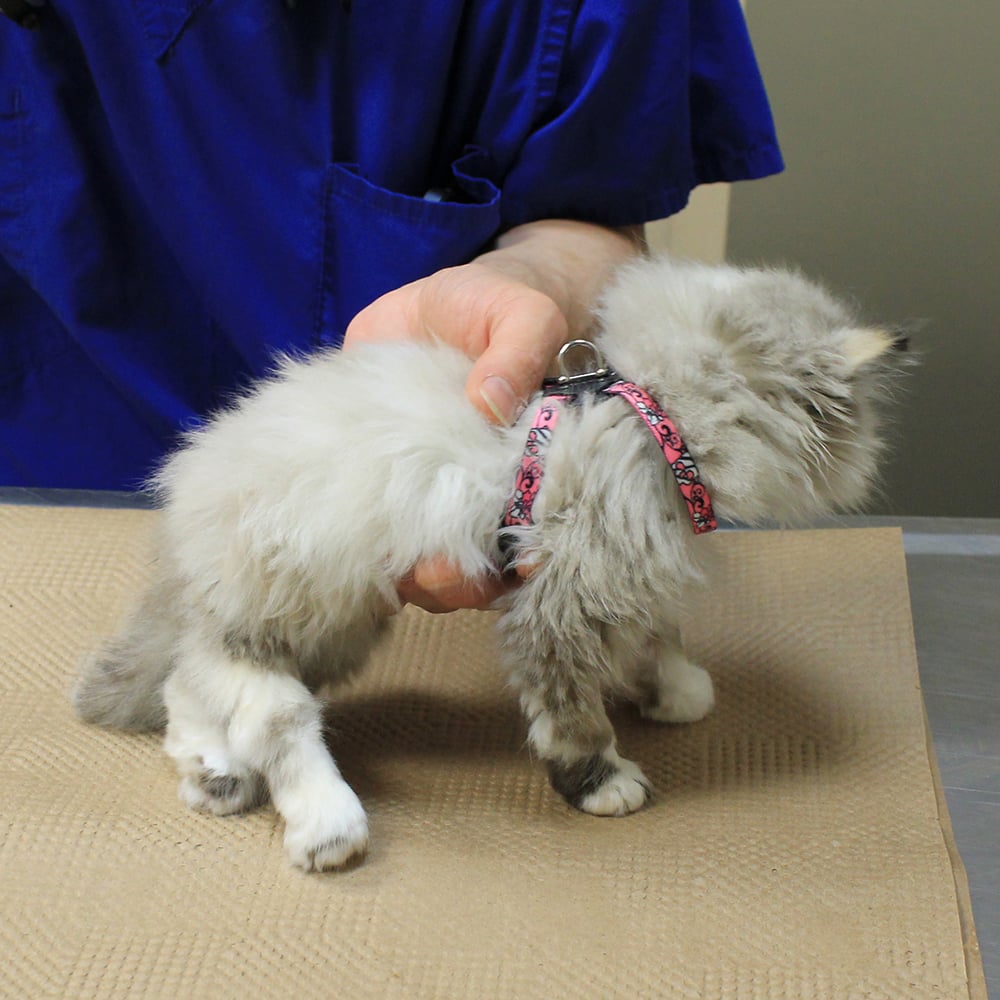
Dr. Philip Litwack, Trixie’s primary veterinarian, says she’s looking at a long, hard road to recovery — at least three to four months, if not longer. “Fortunately, her front legs work great,” he says. “But her right back leg looks quite abnormal. We are providing physical therapy now. Only time will tell how useful that leg will be to her in the future. Also, because of where the spinal abnormality is located, she’s not urinating on her own. So we have to help her express her urine several times a day.”
However, Dr. Litwack remains optimistic. With time and expert physical therapy, he believes that Trixie will acquire significant use of her left hind leg. He’s also hopeful that she’ll be able to urinate on her own and use a litter box. Sadly, he’s less optimistic about her right hind leg, which has suffered nerve damage. “Eventually, I think she’ll be a walking kitten,” he says, “probably a three-legged walking kitten, but mobile and healthy, nevertheless”
Because of her size, Trixie’s rehab presents a unique challenge. Over the years we’ve used many mobility carts for Mutt-i-grees® with problems similar to Trixie’s. But this kitten is so tiny there are no commercially made carts small enough to suit her. So after doing some research, Dr. Litwack built a customized cart for Trixie from K’Nex toys, an Ace™ wrist wrap, and some strategically placed Velcro®. As Trixie grows accustomed to her cart, she’s using her left hind leg more and more, scooting about to investigate her new world. In the meantime, Dr. Litwack is refining her cart’s design, which he calls “a work in progress.”
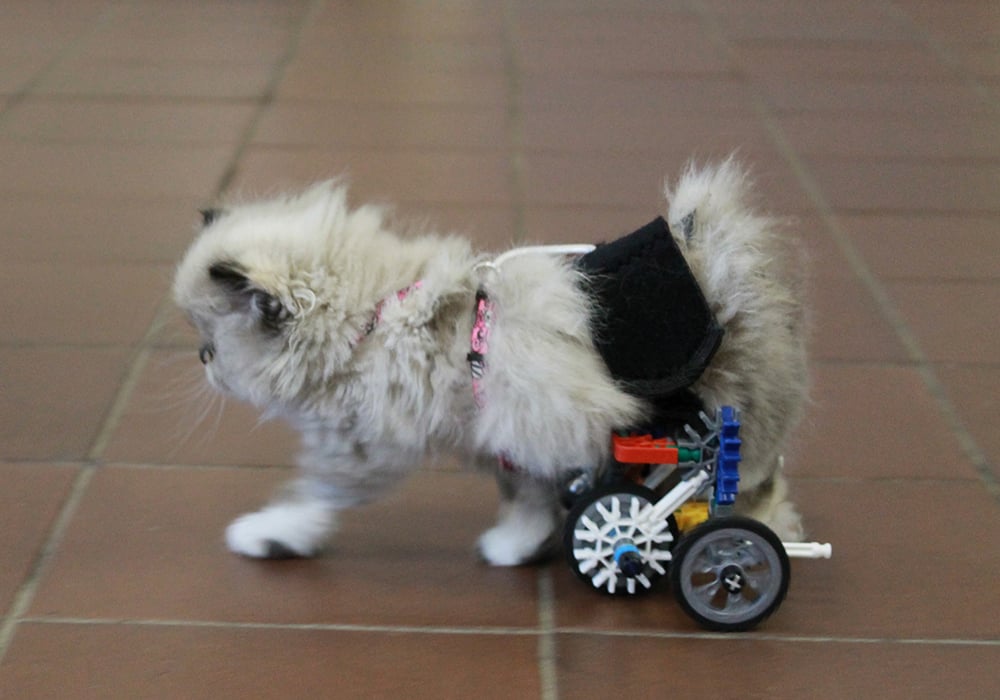
As we see it, Trixie is also a work in progress. Fundamentally, she has everything an adoptable kitten needs, and everyone who meets her knows that, someday, she’ll be the perfect companion for a very lucky adopter.
But until then, Trixie needs extensive rehabilitation, a lot of TLC, and most likely surgery, so she can live the full and happy life she deserves. That’s why we immediately placed Trixie in our lifesaving Help Me Heal Program. Trixie is proof positive that our no-kill mission makes all the difference for so many animals in need. Without Animal League America, this beautiful kitten — with a future full of love to give — would almost certainly have been destroyed.
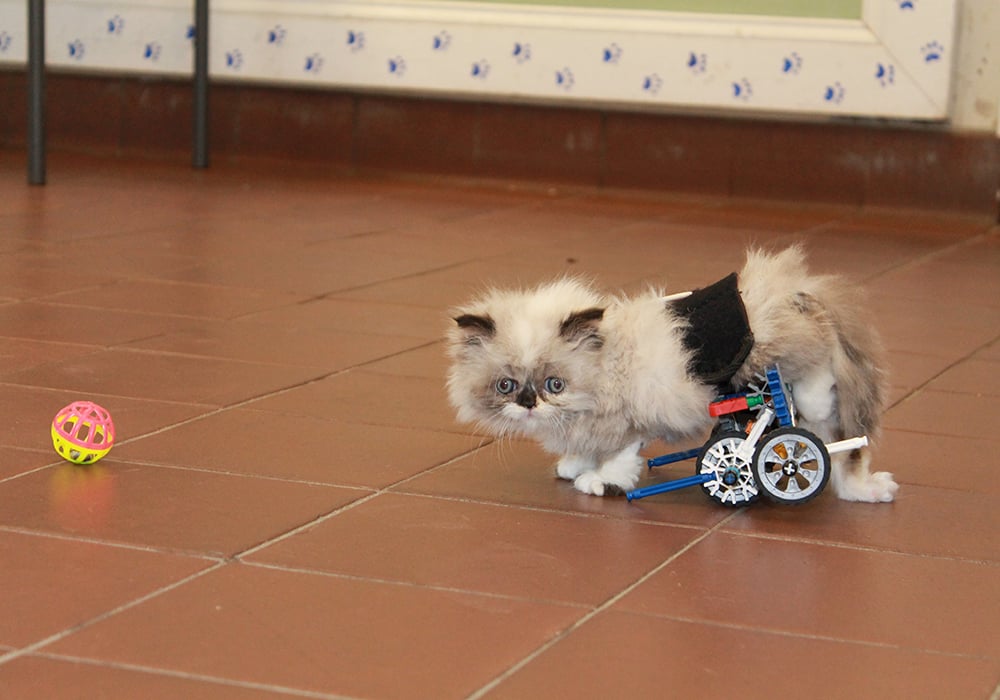
Your contribution to our Help Me Heal Program will provide Trixie and others like her with the lifesaving medical care they need to become the loved companions they were meant to be. Please give to this crucial program now.
On behalf of Trixie and all of our shelter pets, we thank you for your continued support of our no-kill mission.



